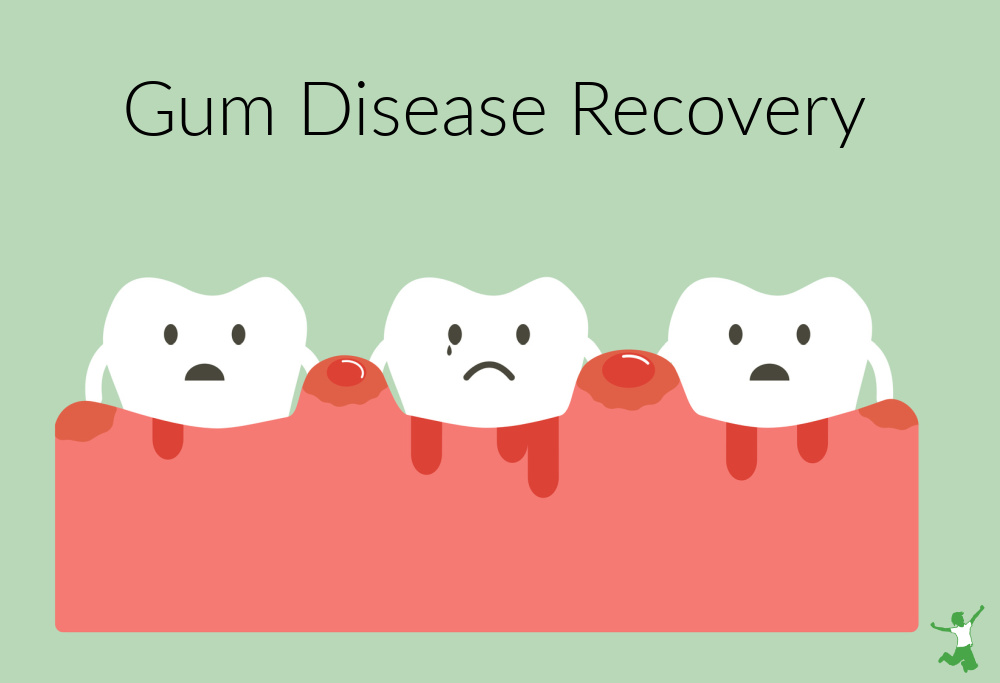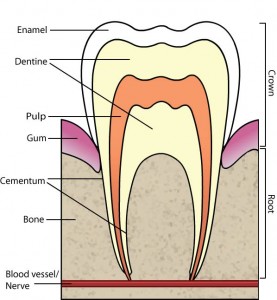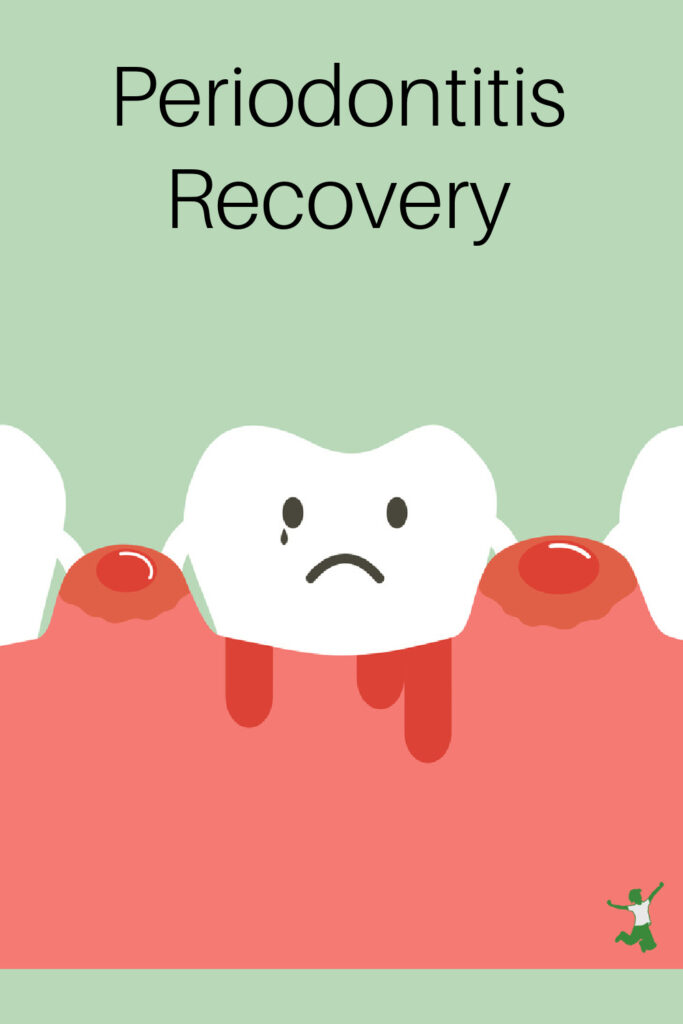Natural dental health expert Will Revak examines how a key traditional food is required for recovery from periodontitis and yet is often overlooked by those seeking holistic approaches to optimal oral health.

Before an in-depth discussion of how consuming traditionally prepared bone broths supports our oral health in such a foundational way, we need to set a baseline to understand just how common oral health issues are.
Let’s dive right in!
Sobering Statistics about Periodontitis
Let’s cover the “bad news” first because contained within the “bad news” are clues and gems of wisdom on how to create the “good news” of improved oral health in our own lives and that of loved ones.
- 9 out of 10 adults at age 30 already have some stage of active gum disease.
- 65% of 15 year olds are already showing the beginning signs of gum disease.
- 92% of adults have tooth decay (National Institute of Dental and Craniofacial Research).
The results, unfortunately, go well beyond a pretty smile.
- Loss of teeth (1 in 3 65 year olds has no natural teeth left in their mouth).
- The breakdown in health results in the loss of the ability to properly chew food.
- Cost of dental insurance throughout the life of an average person.
- Huge implications and potential causal factors of oral disease in other systemic diseases including heart disease, cancer, diabetes, arthritis, and the list goes on and on.
If these sad statistics are correct, which unfortunately they are, most of us are going to personally experience this breakdown in our oral health which will significantly impact our general health and our ability to live a full life.
However, a close look at these issues can illuminate some gems on how we can take the road less traveled and navigate to greater oral health.
Before we get into the “good news”, let’s spend a moment understanding the two main issues here, tooth decay and gum disease.
This will allow us to fully grasp the significance of how bone broths support greater oral health for a lifetime.
The Link Between Cavities and Gum Disease
Tooth decay and gum disease are fundamentally the same issue.
Both involve a breakdown and loss of bone tissue and connective tissue.
Most people realize that tooth decay is a bone loss issue. However, gum disease also involves bone loss.
You see, as gum disease progresses, the bone that acts as a foundation for our teeth breaks down. Lacking a foundation over time, the teeth simply fall out.
Gum disease is the #1 reason for adult tooth loss!

In addition, both tooth decay and gum disease involve the breakdown of the connective tissue in the mouth.
In the diagram above, you can see that the center chamber of each tooth is filled with pulp, which is nerves, blood vessels, and (mostly) connective tissue.
Moreover, each tooth is anchored to the jaw bone foundation by a ligament (connective tissue).
If you think about it, bone never directly connects to other bones in the body.
There has to be connective tissue to connect (redundancy intended) to the bones.
The gum tissue really functions as an interface between the teeth and jaw bones as well as the mechanism to support the region by circulating fluids in the area.
With this baseline in place, the question is how to best support and enhance the body to create and maintain greater bone and connective tissue health.
Folk medicine is a really condescending way of referring to how our ancestors successfully organized and kept themselves alive on a planet where the only constant was change.
Interestingly, many of our ancestors showed an expression of vitality and vigor that is becoming less and less common in our times.
Well, folk medicine has long understood the concept of “like supports like”. In other words, when we consume a specific part of the body of an animal, we support that same part of our body.
Thankfully, we don’t have to eat cow teeth in order to support our oral health!
But the principle that the bone and connective tissues in the body of an animal provide our own bones and connective tissues with the specific nutrients they need to grow strong and maintain health over time rings true.
Modern nutritional science substantiates what our ancestors understood through instinct and observation.
Keeping it simple, our bones and therefore teeth are mostly built from calcium and phosphorus, among other minerals.
A major component of our connective tissues is collagen. One of the beneficial aspects of collagen are a group of nutrients called glycosaminoglycans (GAGs for short).
Anyone who has spent some time in a supplement section knows a few popular GAGs, glucosamine, chondroitin, and hyaluronic acid.
GAGs are crucial for supporting greater connective tissue health.
In fact, they are prized as “youth serums” for their ability to help the joints feel soft and the skin remain firm and even in tone (all connective tissue support).
The question is how do we get these beneficial minerals and nutrients into our systems in a highly bio-available form?
Bone Broth: Raw Materials for Gum Health
The answer is traditionally prepared bone broths!
It is important to note that organic broth from the store is no substitute.
If you want the quality necessary to heal, you really should make it yourself!
If you think about it for a moment, slowly cooking bones, particularly joint bones, gives the bone and connective tissues in the pot time to break down into the stock water.
The result is the perfect balance of minerals that are easily absorbed by the body to support bone health.
In addition, the broth includes copious amounts of collagen for connective tissue health as well as healthy fats from the marrow to make all the above more bioavailable.
Mineral supplements will not provide the same easily absorbed, colloidal minerals as a properly prepared bone broth!
While this may not sound particularly mouth-watering described this way, it’s precisely this process that not only makes any soup way more nutritious but also much more flavorful and delicious.
Think Grandma’s soup, and if you didn’t have a Grandma who made soup like this, all the more reason you have to for the health of your family!
It’s really so simple, which is perhaps why it is often overlooked.
You can use bones from any animal you feel comfortable eating. This can range from beef and chicken to turkey, duck, fish, bison, deer, lamb…you fill in the blank.
Wild caught from clean areas would be optimal for their greater diversity in diet.
Where to find? Many of us simply go to our local butcher and ask for meaty joints and marrow bones for stew.
Be sure the animals are pasture-raised. Again, following the “like supports like” idea, how are we supposed to live healthy lives eating unhealthy animals?
Use bone broth as a base for soups, add it to beans or rice while cooking them, and have a warm cup in the morning (really!).
Here are a few delicious recipes that incorporate bone broth for breakfast.
There are so many ways to enjoy this delicious, nutritious bounty from nature that will help keep your teeth and gums strong for your entire life!
The question you are faced with now is if you are willing to take the road less traveled today and follow the path our ancestors clearly showed us was the way to creating and sustaining greater health (including oral health) or continue to follow our modern culture in its nutritional trainwreck.
I’ll see you at the butcher!









I have a tad bit of this going on, I’m 32 and have always had perfect teeth. I was heartbroken when I found this was happening. My father in law is a dentist too. I look forward to trying this. I use the flippin sonicare twice maybe even three times a day and this still happens to me. =(
I believe that a lot of dental issues are related to fluoride. Get rid of the fluoride.
We completely agree Lauren. However, getting rid of the fluoride is much, much more challenging than many folks realize. As just one example, any processed food (organic or not) made in a city/town that fluoridates its water (74% of US is currently fluoridated) will have pretty high dose in the product (think Wheaties for example).
So, it’s not as simple as just using oral hygiene products that are fluoride free. That said, by all means, we encourage folks to steer clear of oral products containing fluoride.
Your example is perhaps correct, (the Wheaties) but anyone wanting to improve their dental health should also be eliminating virtually ALL packaged/processed foods ESPECIALLY PROCESSED GRAINS!
By designing a diet full of whole, real foods – locally produced veg, fruit – grass fed dairy and meat – there will be very few possible exposures to fluoride.
convience foods are very seldom either food or convenient – stop eating them.
Ravi, Daiasolgaia
Don’t go back to sleep…
Again, we align very strongly with your point here. I don’t want any readers to underestimate the importance of avoiding fluoride and the extreme awareness this active avoidance requires.
For example, even if one is purchasing all organic produce, whether the crops are watered with fluoridated water and even how they are watered plays a role as to whether the plant uptakes the fluoride in the water (naturally occurring or added to municipal water supply).
What about bathing water? It’s been proven that we uptake fluoride through the skin very well.
What about drinking water? The only water purification systems we have found really effective for removing fluoride from water is steam distillation and reverse osmosis. Sure, some filters remove some of the fluoride but the life of the filter media is rather short. We would love to find a drinking water filter we can whole heartedly recommend. Most systems on the market use aluminum to remove the fluoride. Hmm, remove fluoride and put in aluminum? 🙁
Keep up the good work!
Eyes wide open! 🙂
Keep in mind that 74% of the USA is currently fluoridated (CDC).
Talk about paranoid in the extreme…
this shit is ridiculous
Yes! The crockpot makes it easy!
we have a lot of bones left over from our own raised pigs and chickens
how long do you guys let it cook?
18-24 hours for chicken.. we do chicken most of the time..
-jason and lisa-
We make mostly beef bone broth and let it cook for 3 days on average. Sometimes we draw from it early if we have a yummy dinner that would be even more delicious with a couple ladles of broth!
LOVE! bone broth. Once you have had this you won’t go back to store bought. I cheat and use the crock-pot over night, but it still comes out delish!
We love it too Susan! I want to point out a difference for the sake of readers who may not know this (I’m sure you know this). Store bought stocks are not bone stocks/broths. They are made from muscle meats, not bones. As such, store bought box stocks are pretty much flavored water compared to hearty, rich, home made bone broths. The flavor is the proof! And we don’t consider using a crock pot cheating! 🙂
I agree completely! Bone broth works wonders when prepared right.
thank you
If using marrow bones, you want to leave the marrow in, right?
Thanks for the write-up. I’ve only ever made stock once (after reading about it here) but I didn’t keep up the practice – hard to find pasture raised animal bones around here.
Yes, I leave the marrow in while the broth is simmering.
While local options are always preferred (and generally cheaper), thankfully, we can order many quality nutrient dense products, including marrow bones, via mail!
I had to have gum surgery at 29 years old. It was horrible and I hope to never have to have it again! I have to get my teeth cleaned every 4 months now. I do try to have broth more often and I hope it will help my situation.
I actually know someone whose child had to have gum surgery at age 10 or 11. That’s how young these problems are now cropping up.
Raquel,
Thankfully, alternatives exist! Being in the business of helping folks navigate to greater oral health, we hear plenty of horror stories. The good news is each of us can take actions today to improve our oral health. The path is clear to navigate to greater oral health. The ‘bad’ news is that no one can do it for us. It’s up to each person to decide if they want to create positive change. Once the decision is made, the people, information and tools show up!
We have lots of free video tutorials and downloads on our site to help folks along this path.
i must comment here that DIET IS EVERYTHING – adding bone broth is and *excellent* step – but if you do not address the issues of fats and oils, grains, sugar and carbs in general, you will have very limited success by just adding bone broth!
dental health (as Weston Price’s travel research clearly showed) is a matter of NOT EATING THE WRONG FOODS as much as eating the good things – bone broth, quality meats and seafood, etc.
We stopped our 1 year olds tooth decay in it’s tracks but our immediate success was due to the whole package of changes we made in our diets.
You can read her story here (cut/paste google): Healing Tooth Decay: Cod Liver Oil/Butter, Xylitol, Spry Gel & Tooth Powder
Ravi
Daiasolgaia
Don’t go back to sleep…
We almost completely agree with you that diet is (almost) everything. Clearly, diet plays a crucial, fundamental role in anyone looking to create positive changes in their oral health and overall health for that matter. After all, I’m sure we’d both agree that oral health is simply a mirror of what’s going on in the rest of the body.
Good for you for successfully addressing your child’s needs such that you stopped the decay! Way to go! We are so excited by the number of success storied beginning to pop up now. So beautiful of you to share it so others can benefit…
We agree that health is a two sided issue. First, we must stop putting toxins (including foods that create toxic reactions in our system) into the body. Second, repopulate the gut with healthy ecological environment. Without this in place, there’s simply no chance of really bringing our immunity to a high enough place where we can become ‘unsuitable hosts’ for the opportunistic ‘bad bugs’ that cause tooth decay and gum disease. And third, we must address nutrient deficiencies. From our perspective, we must have all 3 pieces in place. And that’s just the nutritional issue. We also must address stress as the research continues to prove the very real impact of stress on immune function.
Keepin our eyes wide open! 🙂
Aloha
YES! Great explanation. I totally agree 🙂